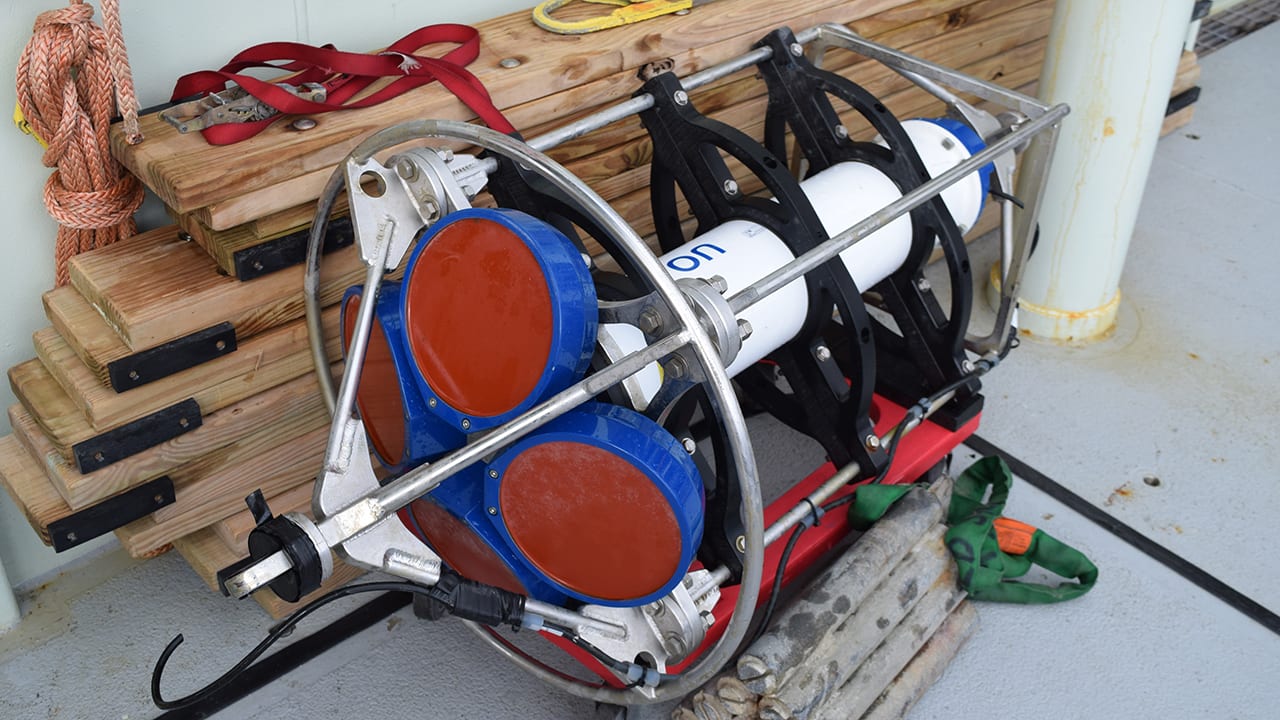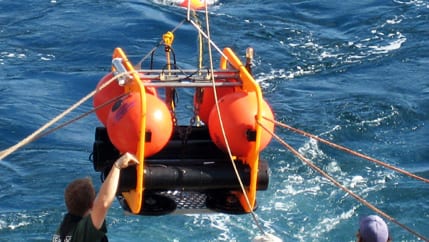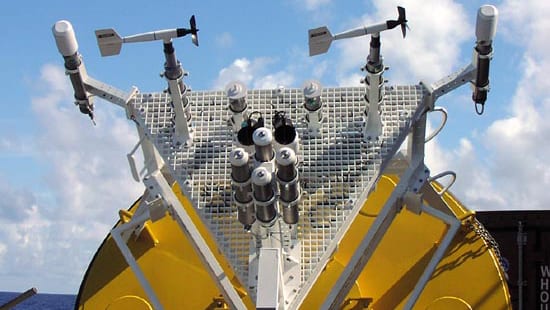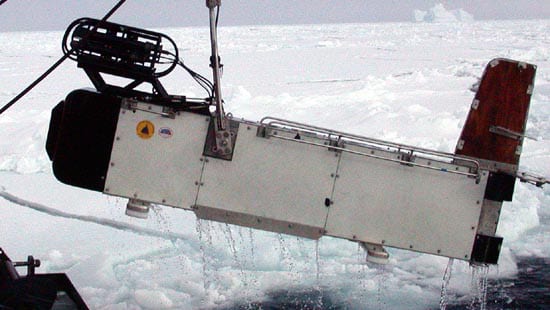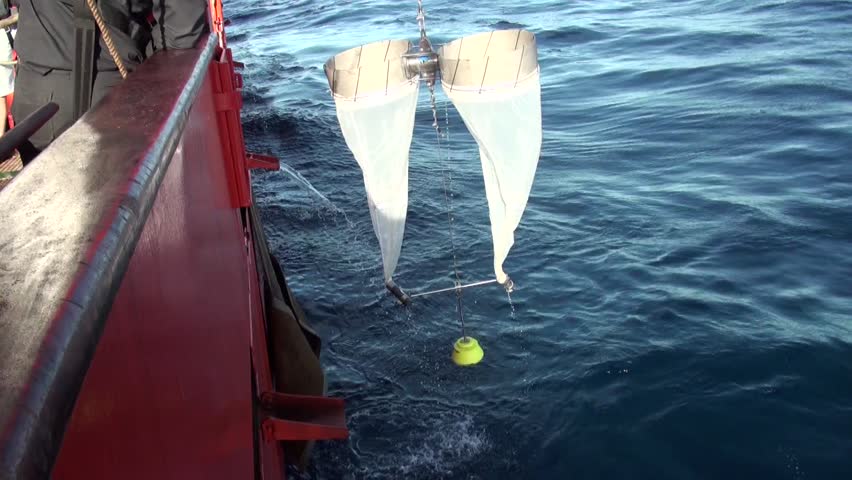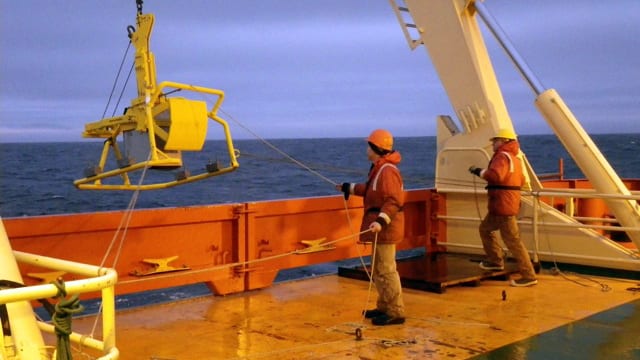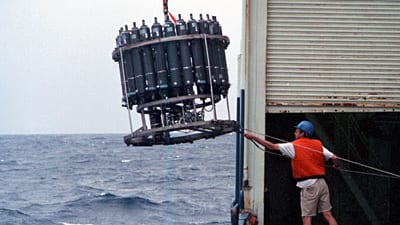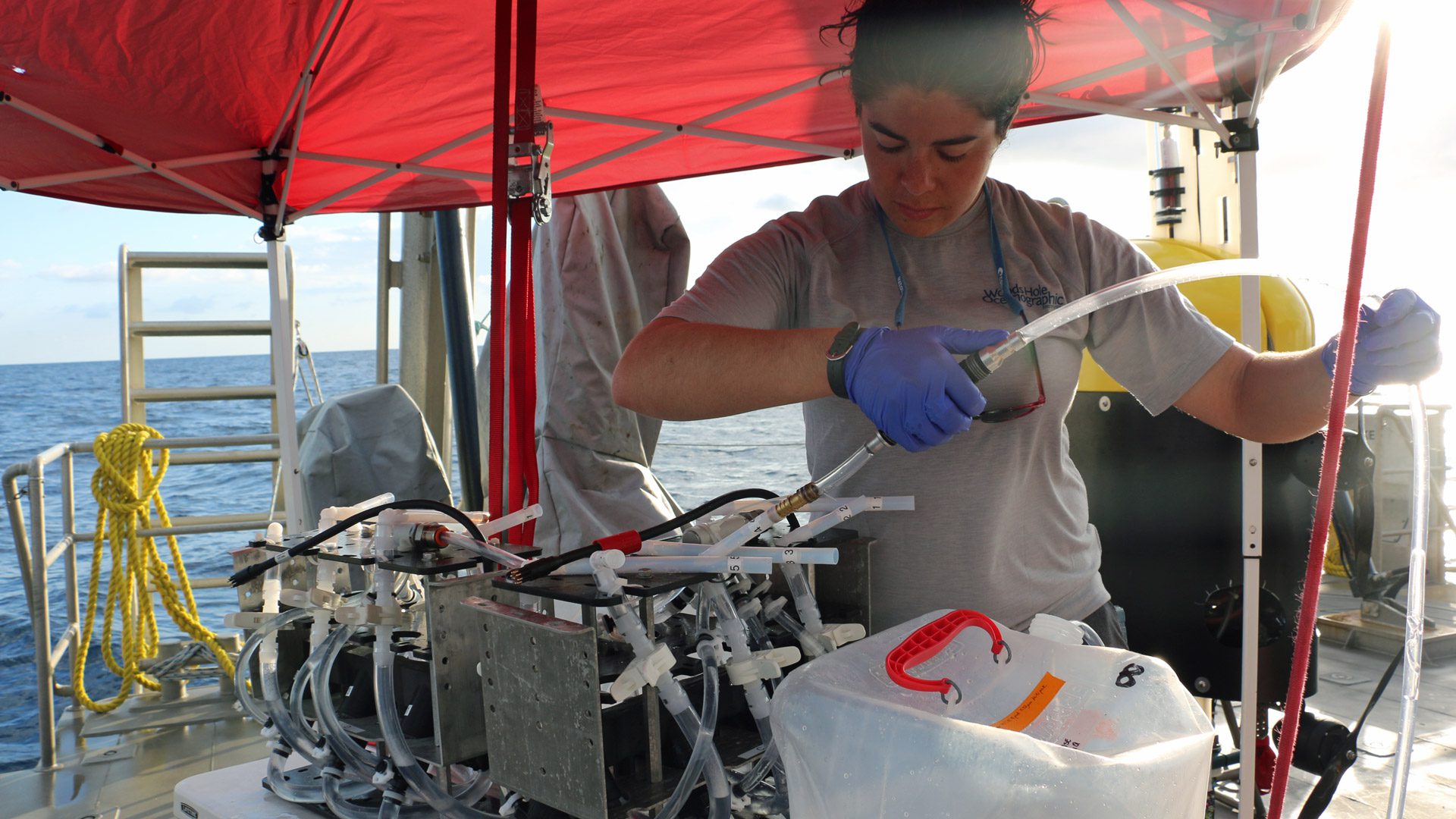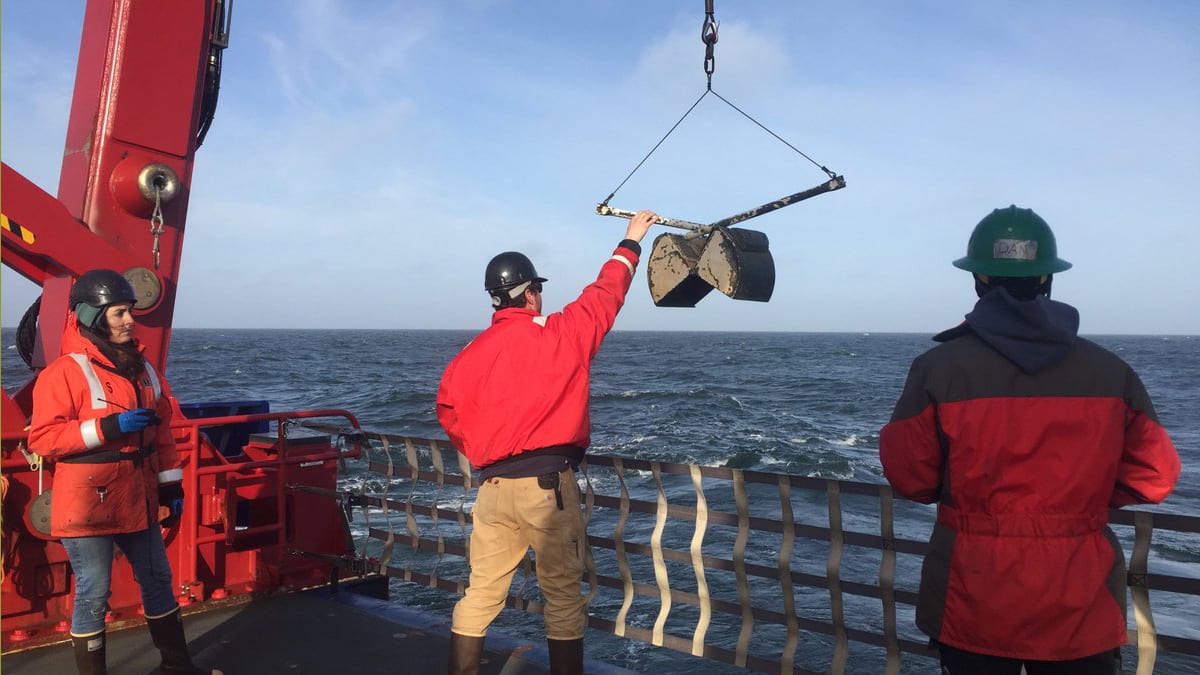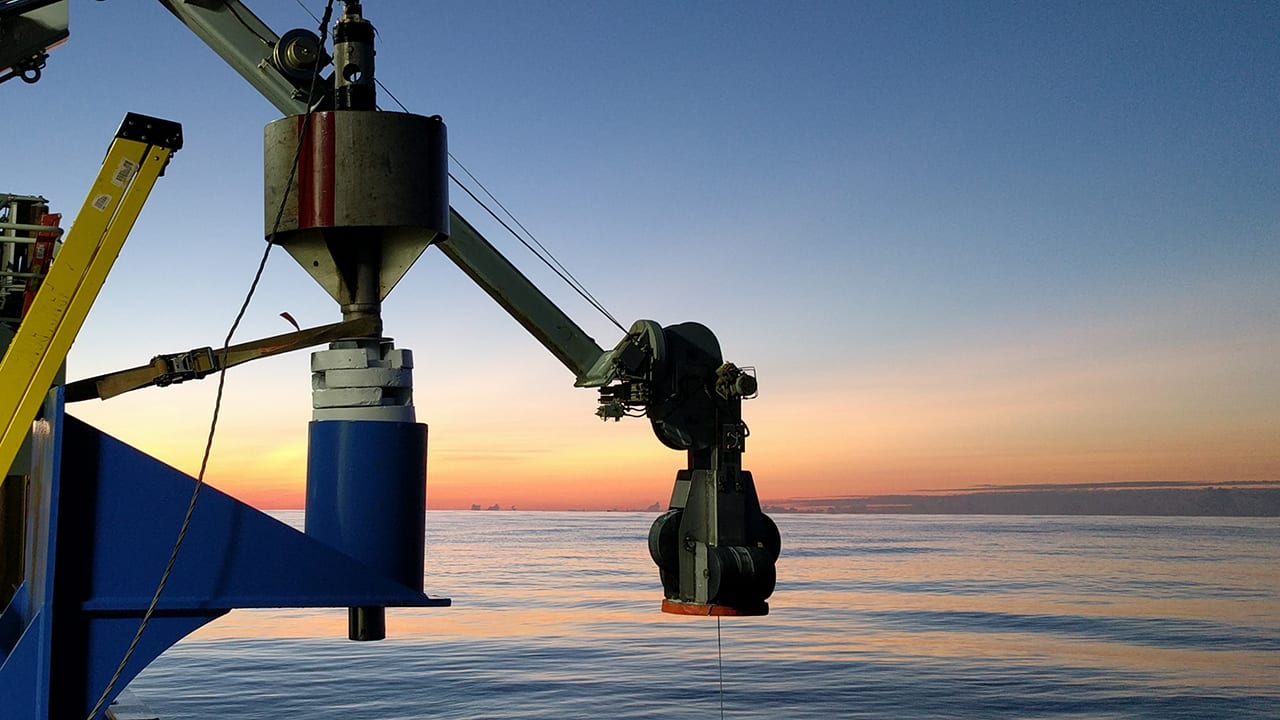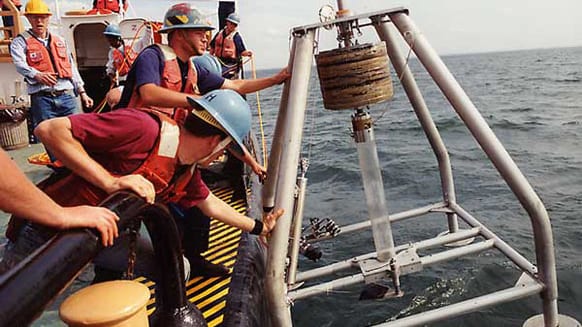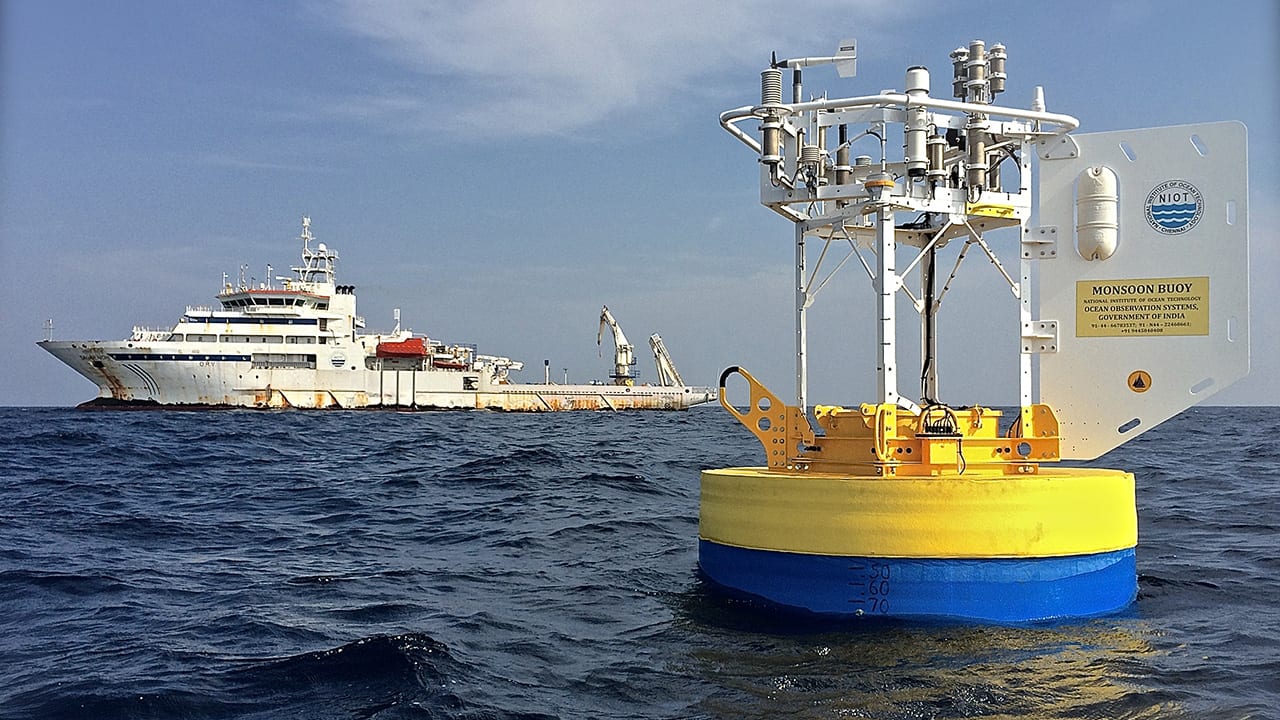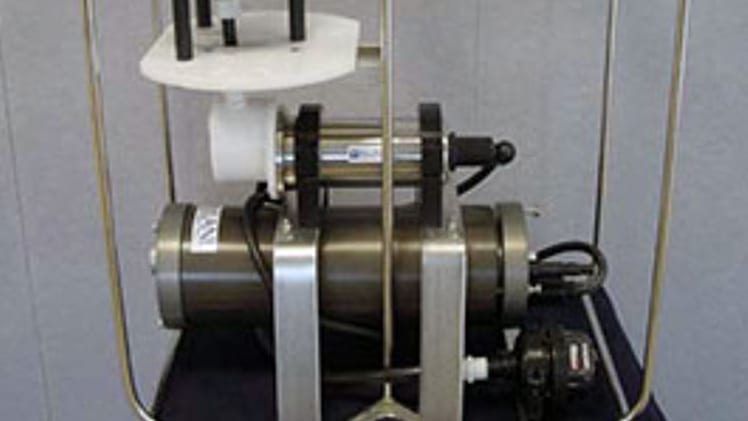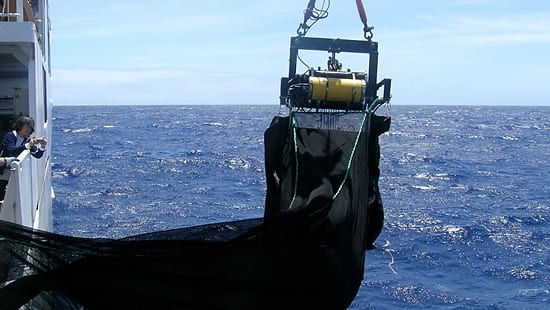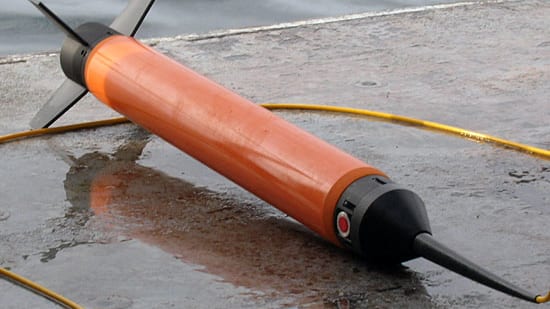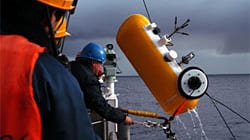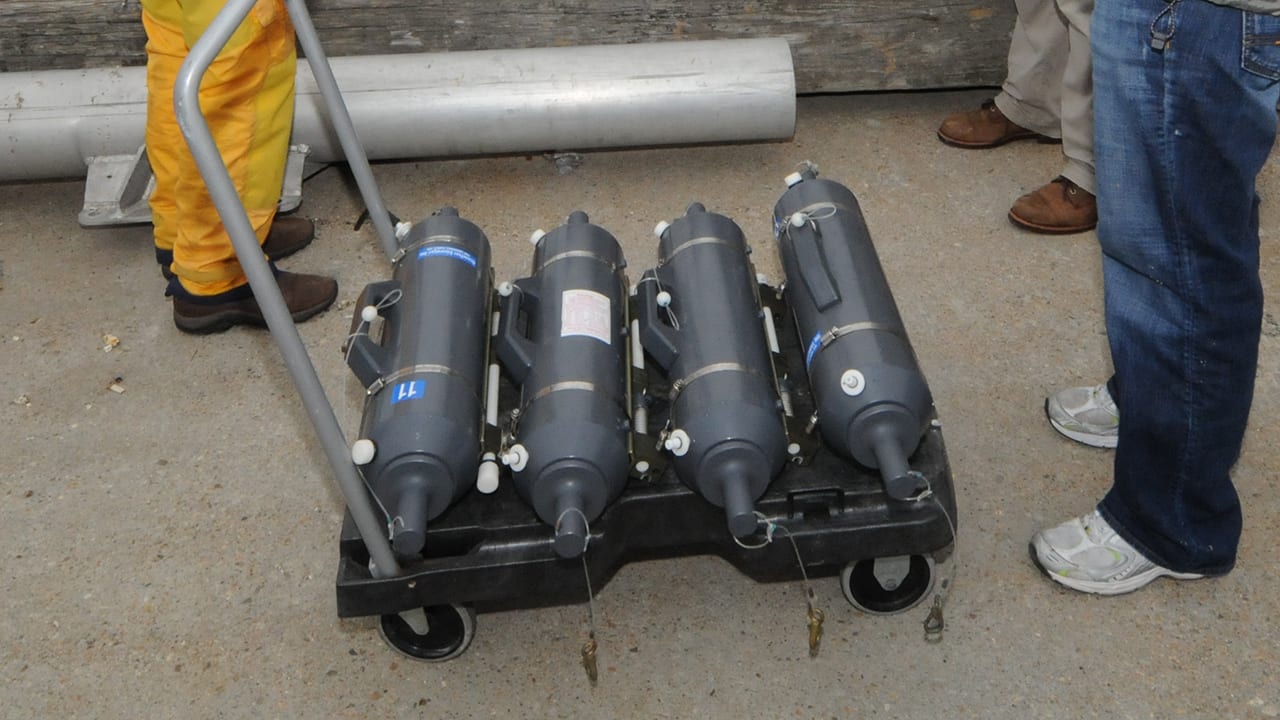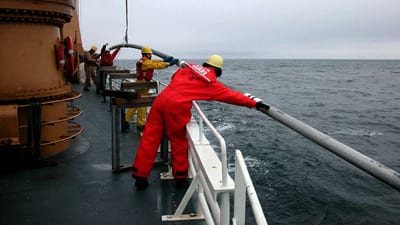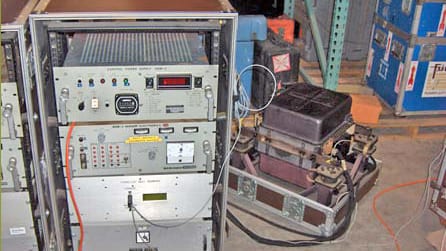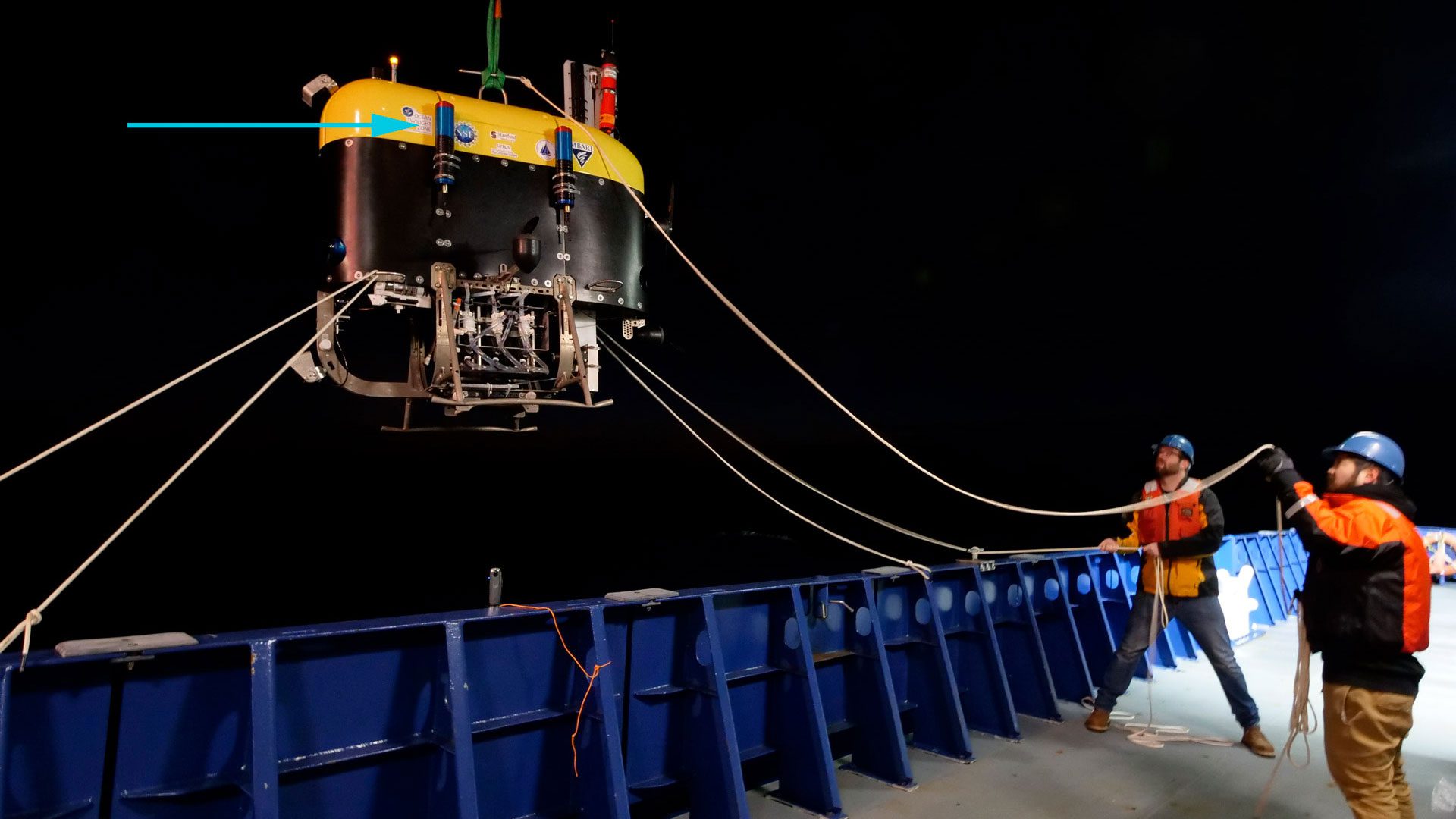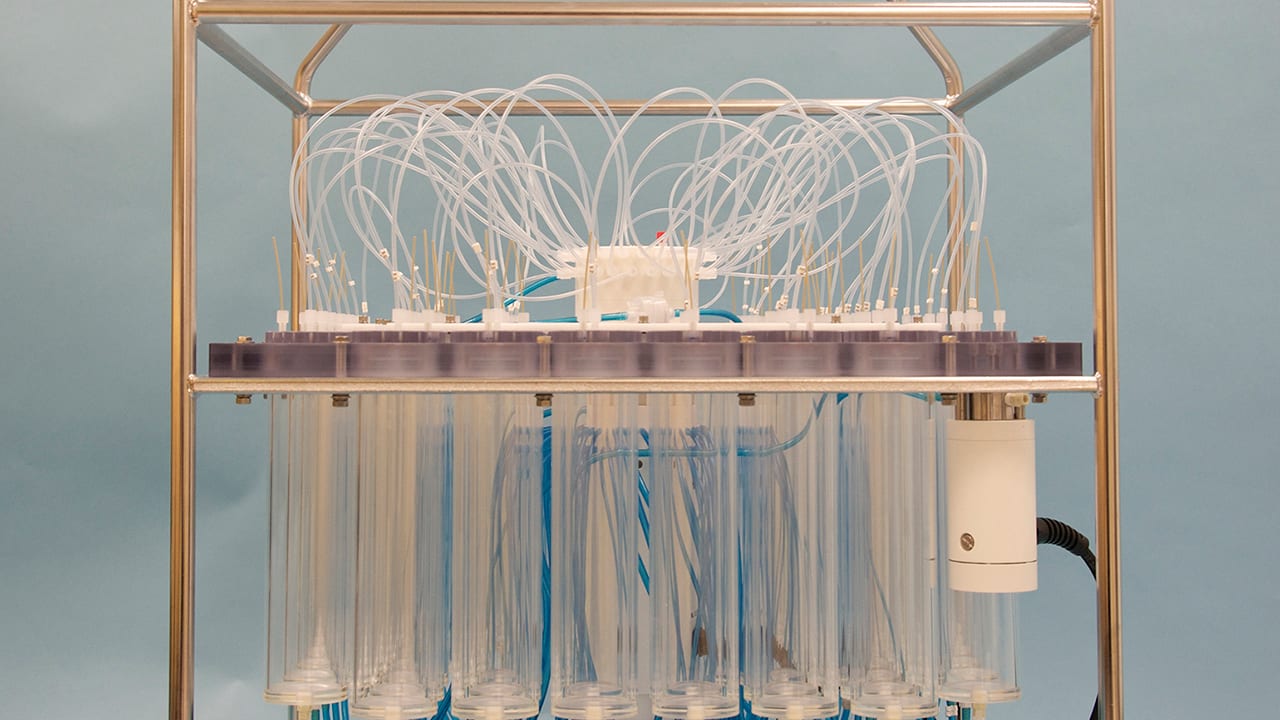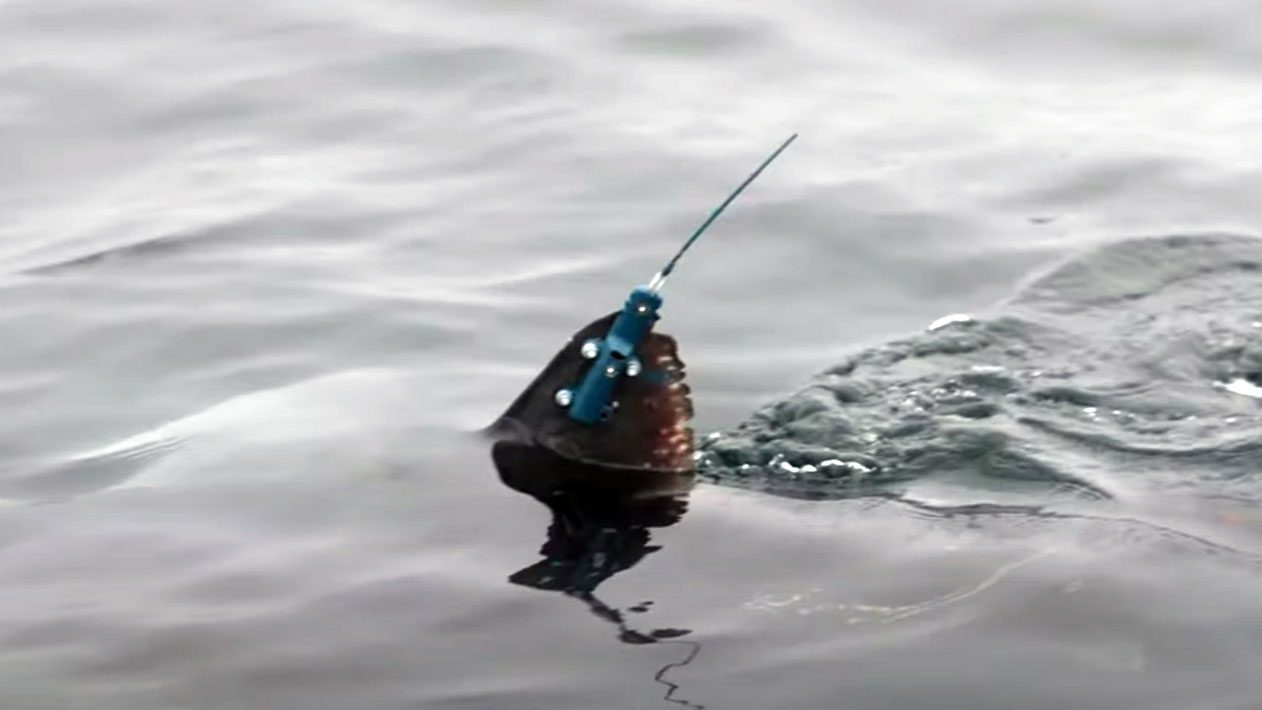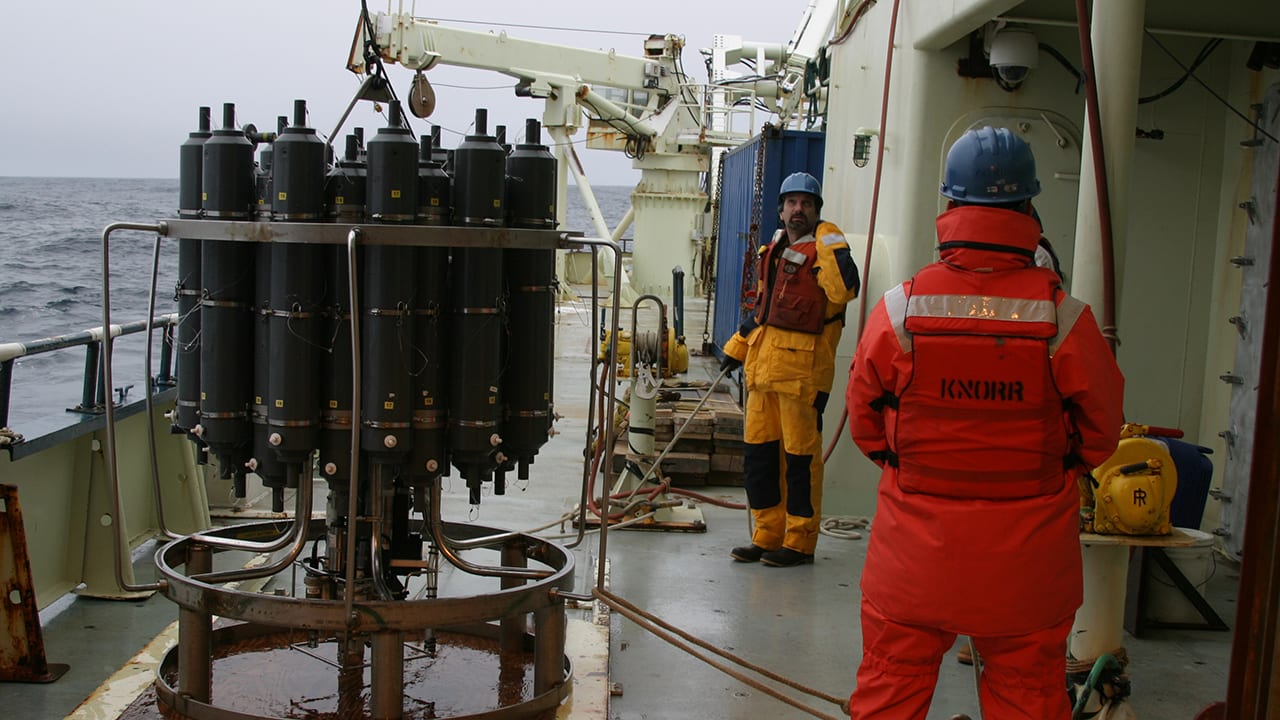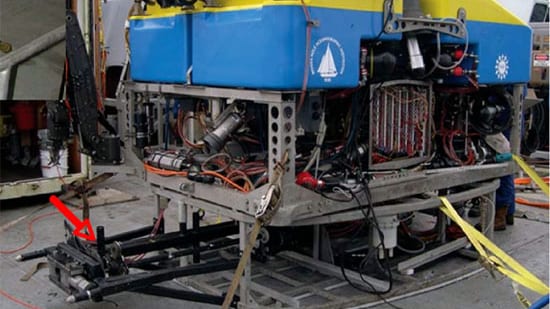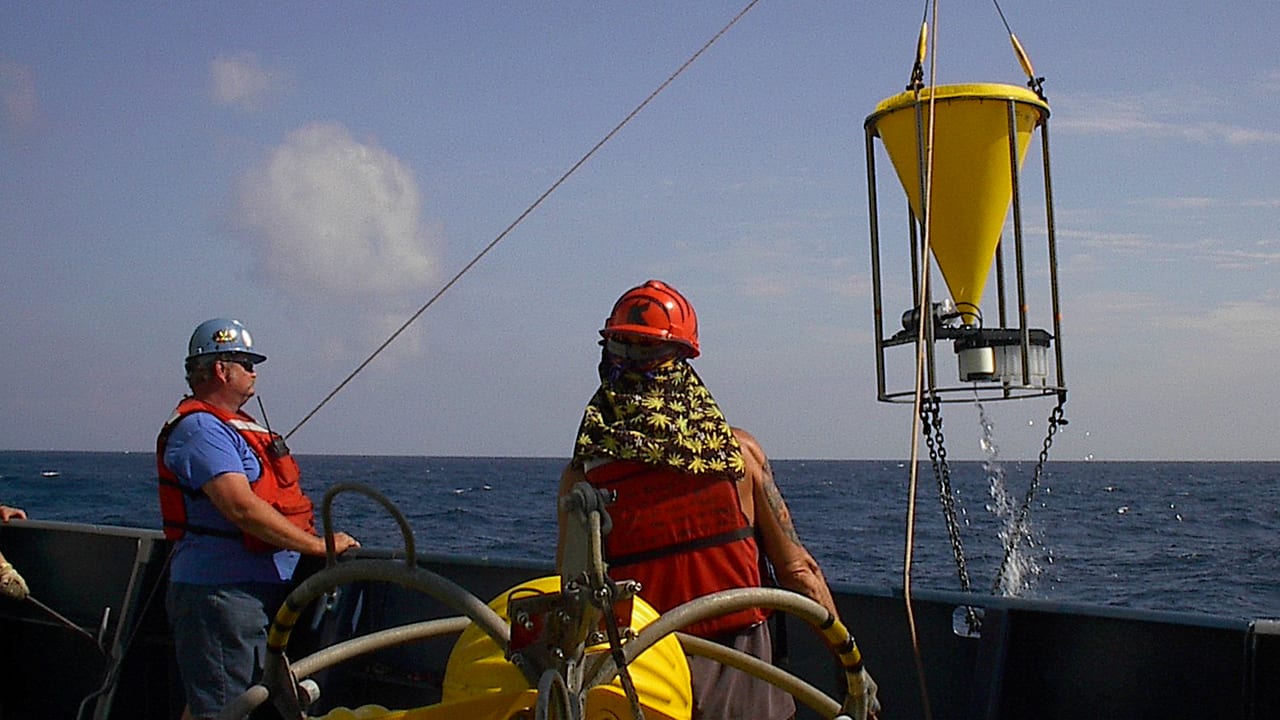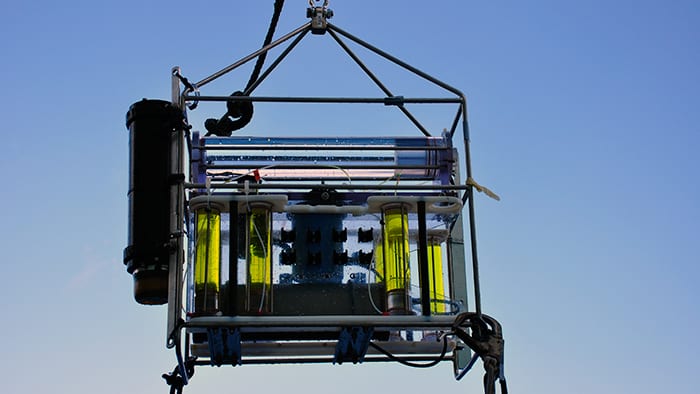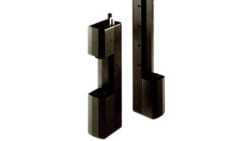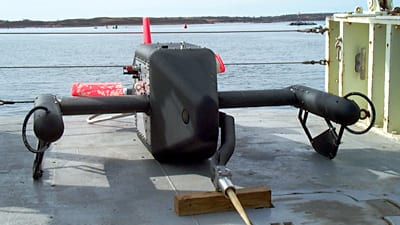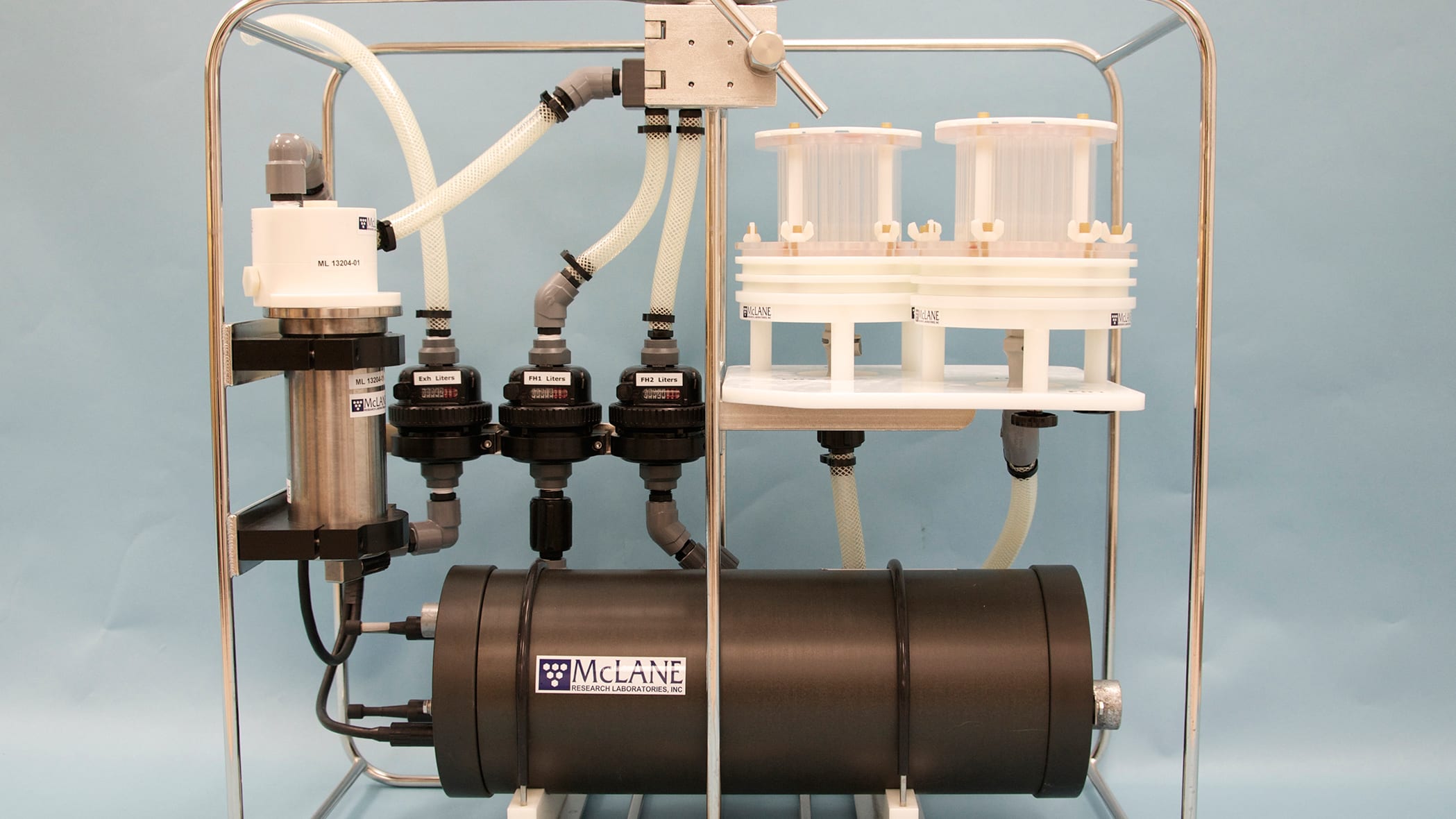Sensors & Samplers
Acoustic Doppler Current Profiler (ADCP)
Scientists use the ADCP to measure how fast water is moving across an entire water column.
Acoustic Recording Package
Acoustic Recording Packages (ARPs) are long-term, autonomous devices which record marine mammal calls.
Air-Sea Interaction Meteorology: The ASIMET System
The ASIMET system is a set of seven very precise sensors that measure how energy and water move between the ocean and atmosphere.
BIOMAPER-II
Researchers use BIOMAPER to learn about phytoplankton and zooplankton over areas that are too large to study with the traditional net-and-microscope method.
Bongo Paired Zooplankton Net
One of the simplest biological samplers, zooplankton nets are made in a wide variety of styles and sizes.
Box Corer
One of the simplest and most commonly used sediment corers.
Conductivity, Temperature, Depth (CTD) Sensors
A CTD—an acronym for Conductivity, Temperature, and Depth—is the primary tool for determining essential physical properties of sea water.
eDNA Sampler
The environmental DNA (eDNA) sampler is used to detect elusive twilight zone creatures by filtering seawater for genetic traces, revealing species that traditional net-based methods might miss in this vast, dark habitat.
Grab Sampler
This sediment sampler has a clam shell-type scoop setup.
Gravity Corer
The gravity corer allows researchers to sample and study sediment layers at the bottom of lakes or oceans. It got its name because gravity carries it to the bottom of the water body.
Hydraulically Damped Gravity Corer
This instrument, like other corers and grab samplers, is used to sample sediments from the ocean floor.
Improved Meteorological Packages (IMET)
Researchers use the IMET to understand the role of the exchanges of heat, gas and water across the air-sea interface in climate change.
Large Volume Water Transfer System (LVP)
McLane Large Volume Water Transfer Systems are designed to collect particulate matter, in-situ, in support of oceanographic research projects and environmental monitoring programs.
MOCNESS
MOCNESS is a much-improved, high-tech version of the humble sampling net. The letters in MOCNESS refer to the specific improvements: it's a Multiple Opening and Closing Net, with an Environmental Sensing System.
Marine Magnetometer
Marine geophysicists, ocean engineers and nautical archeologists use marine magnetometers to detect variations in the total magnetic field of the underlying seafloor.
Moored Profiler
A moored profiler makes repeated measurements of ocean currents and water properties up and down through almost the entire water column, even in very deep water.
Nets and Water Bottles
Water sampling devices range from a bucket dropped over the side of a ship to large water bottles sent thousands of meters toward the seafloor on a wire.
Piston Corer
The piston corer is a long, heavy tube plunged into the seafloor to extract samples of mud sediment. A piston inside the tube allows scientists to capture the longest possible samples, up to 90 feet in length.
Potential Fields Pool Equipment (PFPE)
BGM-3 gyrostabilized marine gravimeters are provided to the UNOLS community through the 'Potential Fields Pool Equipment' (PFPE) section. PFPE provides hardware spares, maintenance and troubleshooting support for the BGM-3 gravimeters for all UNOLS ship operations groups.
Radiometer
WHOI and MIT researchers are developing low-cost radiometers to measure faint twilight zone light, helping reveal its role in animal behavior and enabling more underwater vehicles to gather crucial light data.
Remote Access Sampler (RAS)
McLane Remote Access Samplers are designed to collect in-situ water samples in support of oceanographic research projects and environmental monitoring programs
ROAM Tags
WHOI scientists use ROAM satellite tags to track sharks and large fish in 3D as they hunt in the twilight zone, revealing their diving behavior and movement over months or years.
Rosette Sampler
Probably the most commonly used water sampler is known as a rosette. It is a framework with 12 to 36 sampling bottles clustered around a central cylinder, where a CTD or other sensor package can be attached.
ROV Rock Drill System
Scientists use the ROV Rock Drill System to obtain multiple high-quality samples in the form of short (~2-100 cm) cores. The ROV Rock Drill System was developed by the Monterey Bay Aquarium Research Institute (MBARI). NSF awarded a grant to WHOI scientists to purchase the system from MBARI and provide operational oversight and coordination to allow it to be used by U.S. investigators.
Sediment Trap
Sediment traps are containers that scientists place in the water to collect particles falling toward the sea floor.
Submersible Incubation Device (SID)
SID is a robotic mini-laboratory that automatically collects and processes seawater samples for researchers interested in studying biological activity in the deep ocean.
Transmissometer
The beam transmissometer measures the fraction of light, from a collimated light source, reaching a light detector a set distance away.
Video Plankton Recorder (VPR)
The Video Plankton Recorder (VPR) is an underwater video microscope system that that takes images of plankton and particulate matter as small as 50 microns and up to a few centimeters in size.
Water Transfer System (WTS)
The water tranfer system draws ambient water through filters in which suspended material is collected.
Zooplankton Sampler (ZPS)
Zooplankton Samplers are designed to collect zooplankton, in-situ, in support of oceanographic research projects and environmental monitoring programs.

